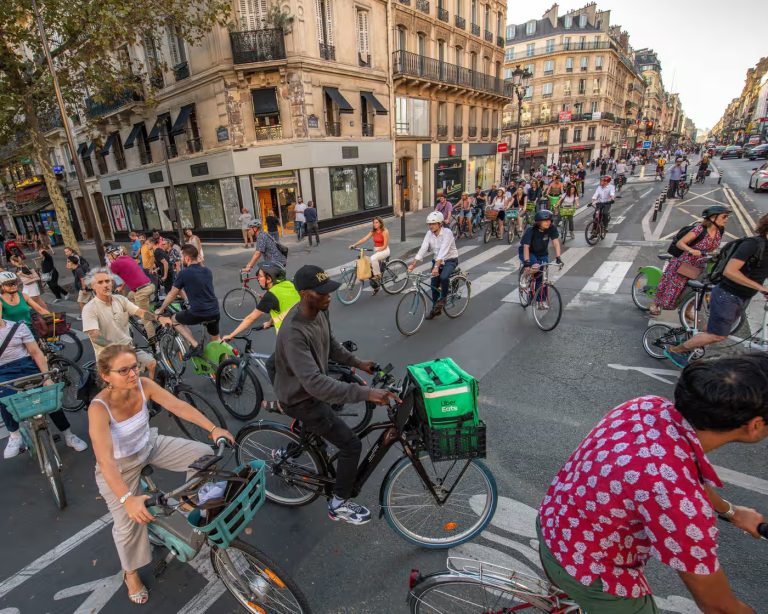Paris, long known for its fast-moving traffic and the bump-and-squeeze parking style of its drivers, has undergone a dramatic transformation. The city now ranks as the most cycling-friendly in Europe for children.
Beating out traditionally bike-loving cities like Amsterdam and Copenhagen, Paris has taken the lead in a new report evaluating how well urban environments support young cyclists.
The study, conducted by the Clean Cities Campaign, assessed 36 European cities based on cycling infrastructure, safety measures, and accessibility for children.
Paris owes its top position to significant investments tied to the upcoming 2024 Olympic Games, as well as a dedicated €250 million initiative to expand its bike lane network.
Under the leadership of Mayor Anne Hidalgo, the city has constructed around 180 kilometers of new cycling lanes and implemented widespread traffic-calming strategies.
The report considered a range of data, including the presence of separated bike lanes, widespread 30 km/h speed limits, and school streets where traffic is restricted during peak hours.
Antwerp in Belgium placed third in the ranking, just behind Amsterdam, with Brussels, Lyon, Helsinki, Barcelona, Bristol, Oslo, and Ghent rounding out the top ten.
According to the report, cities like Amsterdam and Copenhagen have earned reputations as long-standing pioneers in urban cycling, having made infrastructure changes decades ago.
By contrast, cities such as Paris, Brussels, and London have made rapid improvements within the past decade, proving that significant change can happen relatively quickly.
The report emphasized the importance of child-focused cycling infrastructure, noting that with 70 percent of Europeans living in cities and 14 percent of the population under age 14, safer roads for children are essential.
Barbara Stoll, senior director at the Clean Cities Campaign, said children’s mobility was declining. She pointed out that children today, especially girls, are less active and have fewer opportunities to navigate their cities independently.
Despite the progress in some cities, eight were labeled underperformers, most of them located in southern, central, and eastern Europe.
Cities like Marseille, Rome, Florence, Krakow, Budapest, and Sofia were among those ranked lowest, with the Bulgarian capital falling to the very bottom of the list.
Interestingly, even Paris failed to receive an “A” grade, indicating that while improvements are evident, no city has yet achieved excellence across all categories.
Clément Drognat Landre, the campaign’s French coordinator, noted that while debates continue around low-emission zones, there is widespread agreement on the need for safer cycling routes for children.
He also highlighted the health benefits of cleaner air and the public support for school streets, which limit traffic near educational institutions during key times of day.
In Amsterdam, concern is growing among cycling advocates that national policies may be working against local efforts to protect and encourage child cycling.
Maud de Vries, co-founder of the cycling advocacy group BYCS, said the city is committed to inclusive public spaces, but national-level decisions are not moving in the same direction.
Belgium’s Flanders region has also made cycling a serious priority, investing in infrastructure and policies that support safe commuting for schoolchildren.
According to Wies Callens of the Fietsersbond cycling association, measures like Ghent’s circulation plan and employer bike schemes are making a tangible difference in daily life.
In Helsinki, lowering speed limits in residential areas to 30 km/h has led to fewer accidents, according to traffic engineer Roni Utriainen, contributing to the city’s improved safety for young cyclists.

